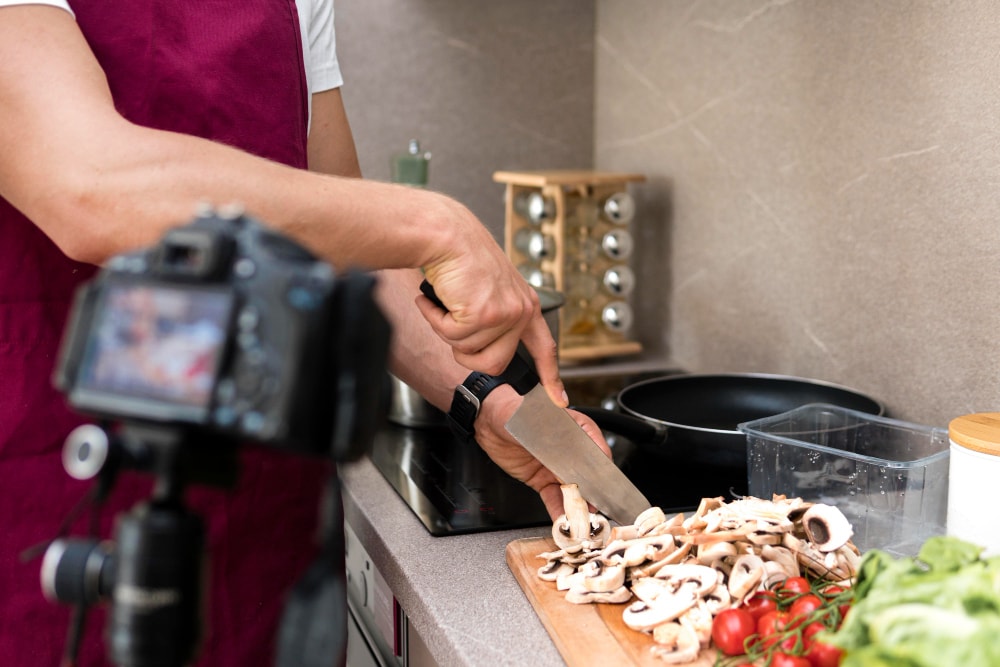
There’s something strangely addictive about ASMR cooking videos. Maybe it’s the sound of a knife slicing through cucumbers, the gentle sizzle of oil heating in a hot pan, or the clink of glass bowls.
Unlike traditional recipe videos, which are mostly fast and instructional, ASMR cooking videos are slow and aesthetic. They focus on the texture of the food, the rhythm of the process, and the sound of cooking.
But here’s the catch: good ASMR cooking content isn’t just about filming your meal prep. It’s about making every stir, pour, and scrape deliberate. With ASMR cooking, every audio detail is designed to trigger a satisfying and almost meditative feeling in the viewer. That’s what keeps people watching—and rewatching.
In this article, you’ll learn how to create those kinds of videos, satisfying ASMR sounds to use in your cooking videos, and how to edit them to perfection.
In this article
Part 1: Set Up Your Perfect ASMR Kitchen Setup
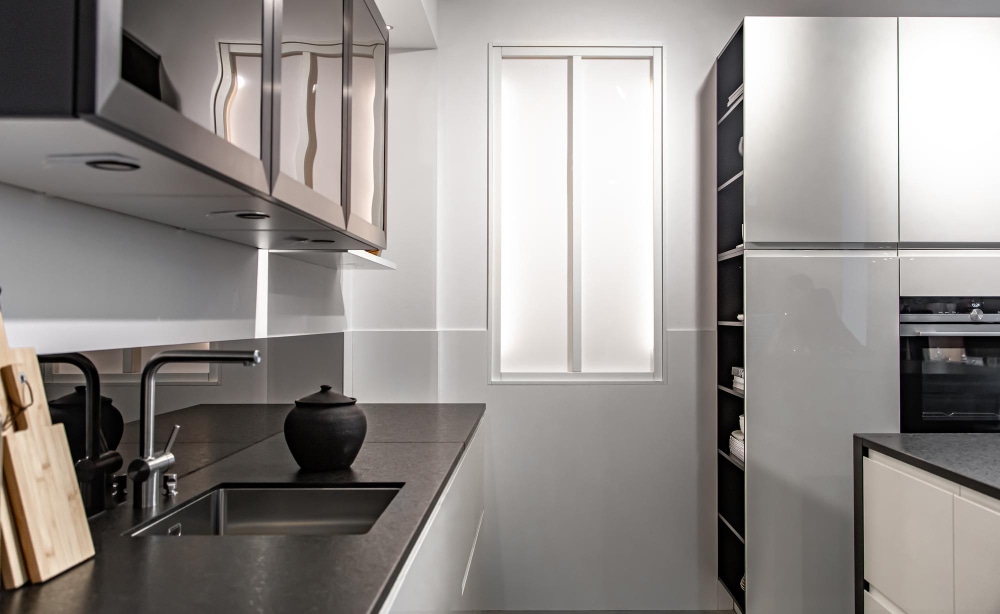
A good ASMR cooking video starts with the space you shoot in. Your kitchen setup and ambiance play a part in how soothing your content feels. A clutter-free kitchen helps you capture crisper raw audio, especially if you're using an onboard or beginner mic setup.
Tips for Setting Up Your ASMR-Friendly Kitchen
Here’s how to create the perfect ASMR kitchen for your videos:
- Keep countertops clear.
Only include the ingredients and tools you’ll be using. Everything else becomes visual noise. A clutter-free kitchen gives the brain fewer things to filter out, so the viewer’s attention naturally shifts to the audio details: the sizzle, the slice, the steam.
This is sensory alignment, and guess what—it works!
- Use soft, natural lighting.
This enhances textures. You can spot the gleam on an oiled cutting board, the steam from boiling pasta, or sugar crystals melting on a crème brûlée without any harsh shadows or glare.
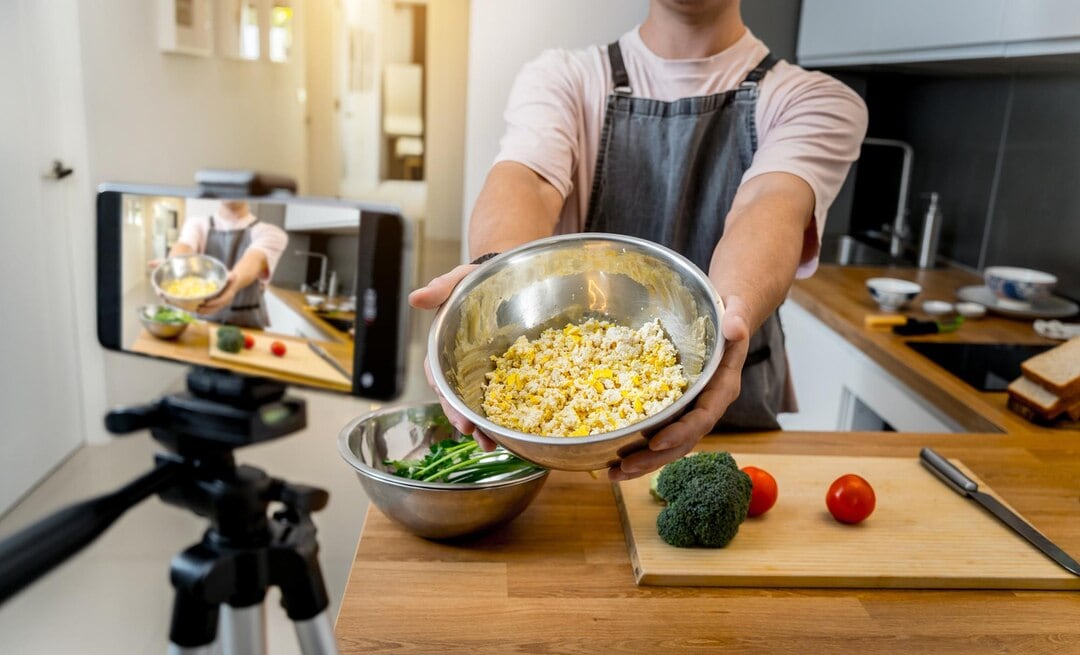
- Select the right cookware.
- Use wooden cutting boards instead of plastic.
- Glass bowls instead of metal or steel.
- Silicone spatulas instead of metal spoons, etc.
When making ,cooking videos for ASMR, go for items that sound good. For example:
- Control unwanted sounds.
- Place a towel or silicone mat under your cutting board to dampen loud knocks.
- Use silicone or wooden utensils to reduce clatter during stirring or flipping.
- Mic placement counts.
Even with a basic mic, try angling it closer to the action, just out of frame but near the source of the sound. Keep it stable and away from vibrating surfaces to reduce distortion.
You don’t need a designer kitchen or a soundproof studio. You just need a quiet, minimalist space, good lighting, and cookware that gives the kinds of ASMR cooking sounds your audience wants to hear.
Part 2: Top Most Satisfying ASMR Cooking Sounds
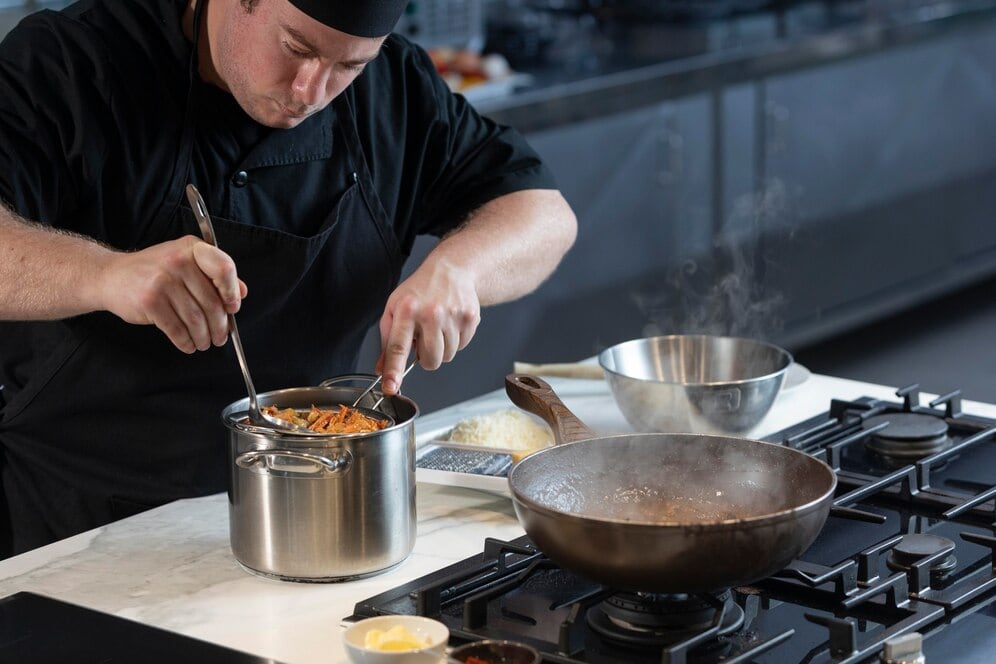
Once your kitchen is set, it’s time to focus on what really draws people in: the sound. In ASMR kitchen videos, audio isn’t a background element—it’s the star. And not just any sound will do.
Every clink, chop, and pour you capture should be intentional and satisfying. These moments are what trigger the “tingles” or that almost meditative state ASMR lovers want.
The Most Satisfying ASMR Sounds
Here are some classic ASMR cooking sounds.
- Chopping
- Slicing
- Pouring
- Frying
- Scraping
- Stirring
- Boiling
- Whisking
- Grating
- Stir-frying
- Sizzling
Why Live Audio Isn’t Always Ideal
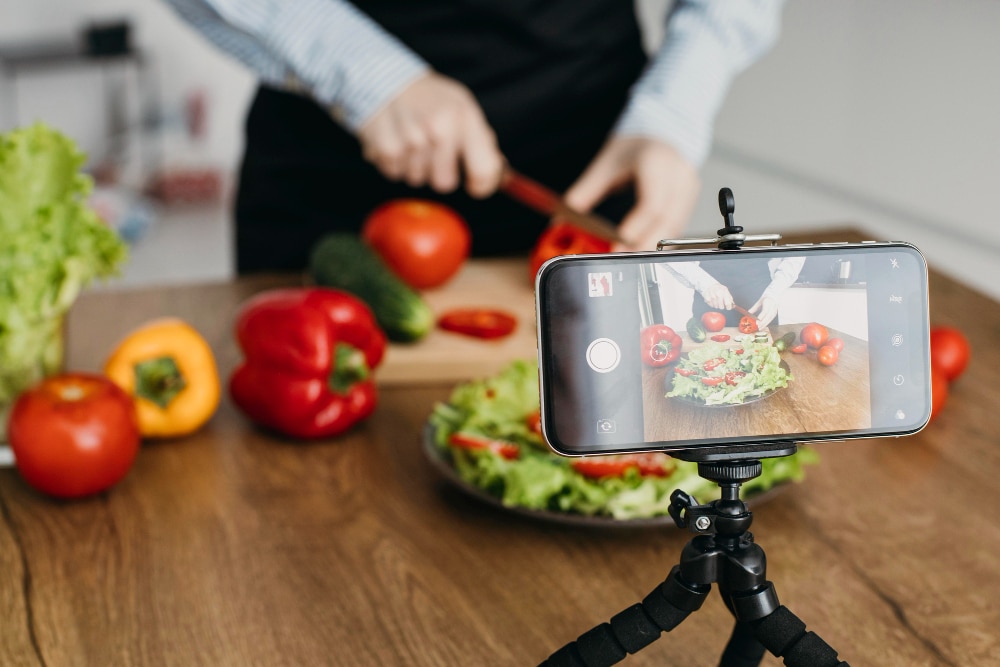
Capturing crisp, clean ASMR sounds while cooking seems great in theory, but in practice, it’s tricky. You may nail your ASMR kitchen setup, get the right cookware, yet still struggle to capture the perfect cooking sounds.
Maybe your mic isn’t isolating sound well. Maybe your neighbors are loud or the train chose that very moment to run by. Maybe your cat decides to leap onto the counter mid-shot. All of these may affect the quality of ASMR cooking sounds you get. The result? audio clipping, echoes or reverb, inconsistent sound, and not-so-ASMR audio.
These problems can be difficult to fix. So, in cases like these, post-production tools, especially ones with a solid sound library, come in handy.
Part 3. How to Capture or Layer Perfect ASMR Cooking Sounds
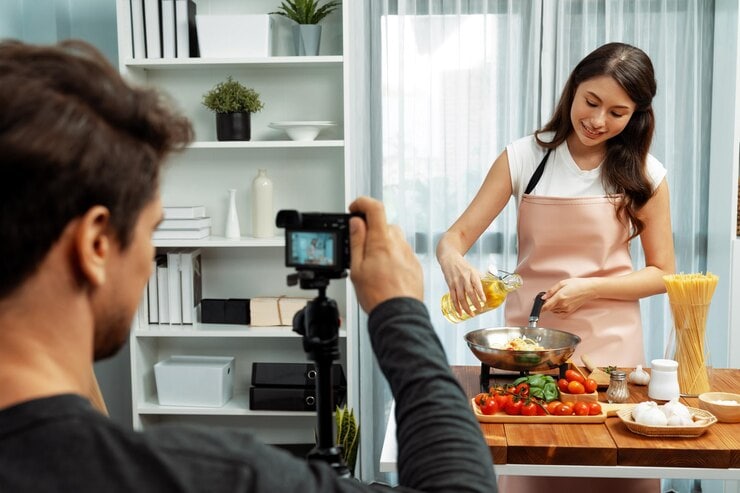
If your live cooking audio isn’t usable—or just not satisfying enough—don’t worry. You’re not stuck with it. Many successful ASMR cooking creators layer in high-quality sound effects during editing to either enhance or completely replace the original audio.
Layer High-Quality ASMR Cooking Sounds
Instead of re-recording your whole video, you can layer your cooking audio with ASMR sound effects. These clips are of high quality and pre-recorded; they can be used in place of raw audio. Video editing software like Wondershare Filmora comes with these sounds built in for accessibility.

Filmora is a video and audio editing tool that gives you access to a curated sound effects library, including satisfying ASMR kitchen sounds. You’ll find everything from chopping, sizzling, and bubbling to pouring, scraping, stirring, etc.
You don’t even need audio editing experience. You can easily drag, drop, and add these sounds to your video on the timeline. What’s more, it also contains an AI sound generator and you can even generate cooking ASMR as you want.
Here’s how to use Filmora’s Sound Library for your ASMR kitchen videos.
- Open Filmora and click on New Project.
- Import your cooking videos to the Filmora dashboard.
- Drag and drop it on the timeline.
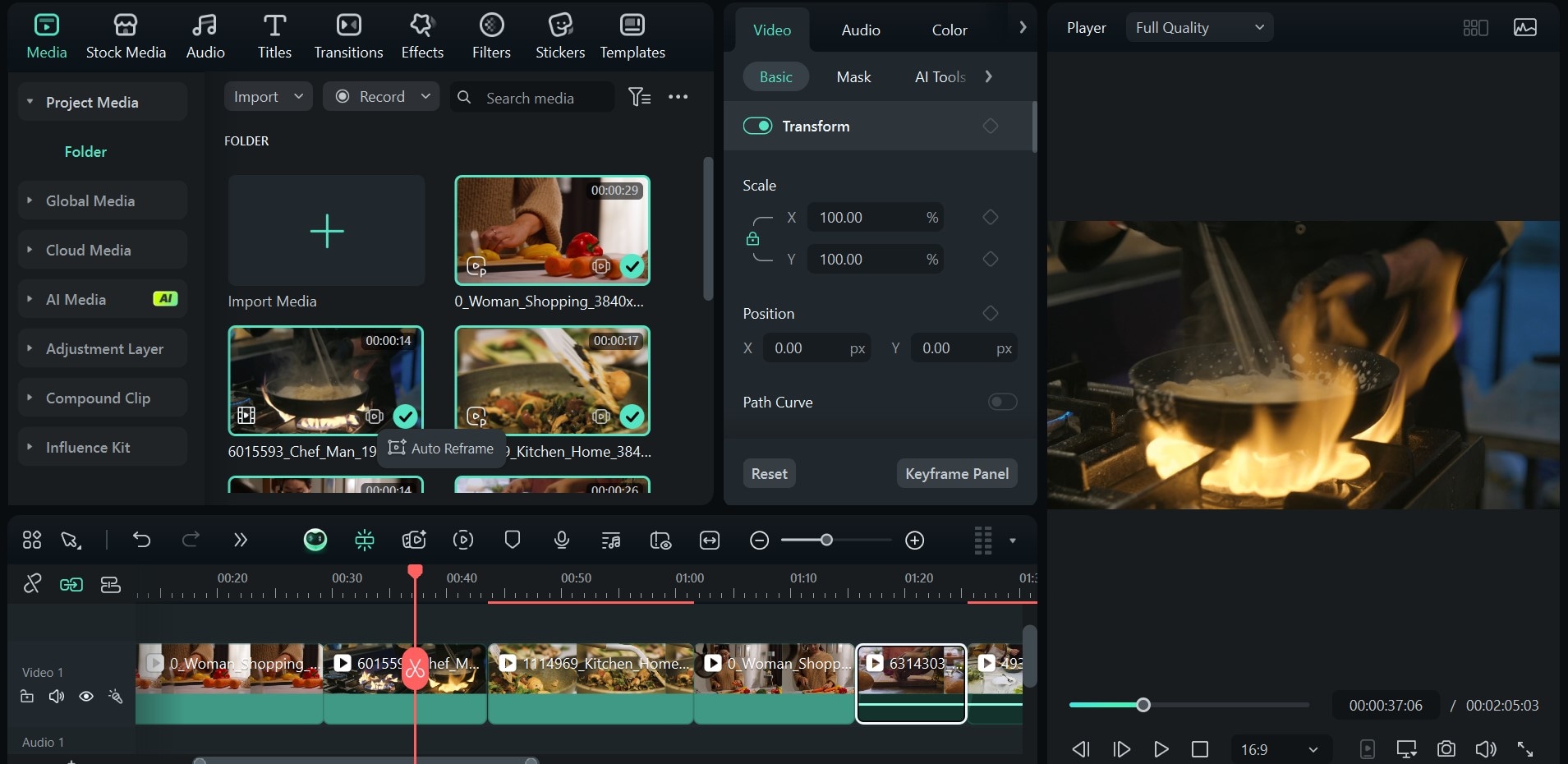
- Go to Audio on the toolbar and search for different ASMR kitchen sounds that match specific clips in your video. For example: “chopping sounds”, “sizzling sounds”, “slicing sounds”,
- Drag and drop these sound clips under your video on the timeline.
- Trim the sound clip to fit only the section of the video that matches it. You wouldn’t want the boiling sounds in scenes where you’re chopping tomatoes.
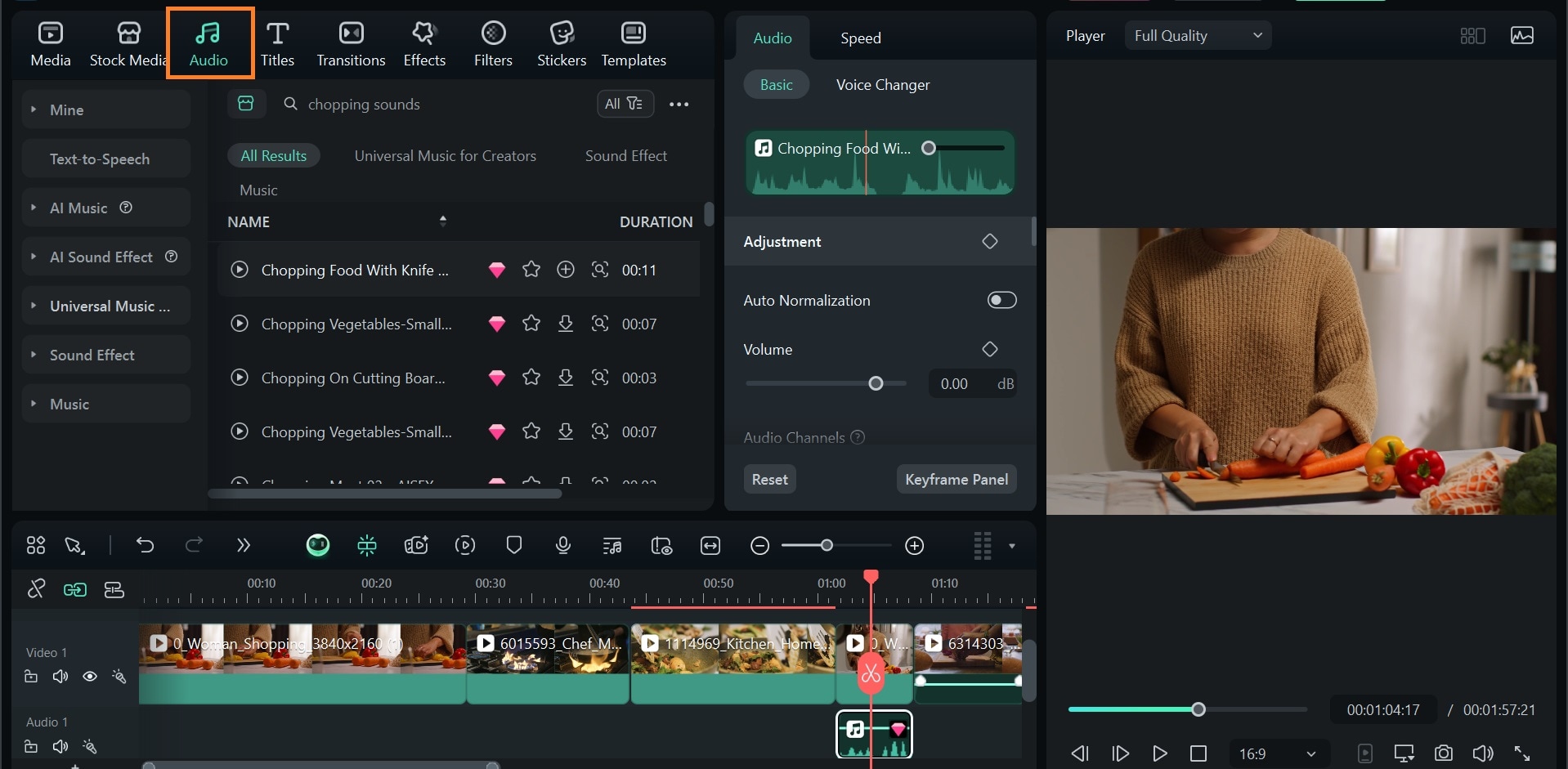
Repeat the process until you have added aesthetic ASMR cooking audio to every section of your video that needs it. Next, export your video in HD.
Blending Layered ASMR Cooking Sounds with Raw Audio
If your original audio has decent ambiance or is usable, you don’t have to delete it—just blend it with Filmora’s sound clips.
Here’s how to do it with Filmora.
- Select the video clip(s) on the timeline.
- Go to the Audio tabon the editor panel and reduce the Volume to about 30–40% so it becomes a subtle background layer.
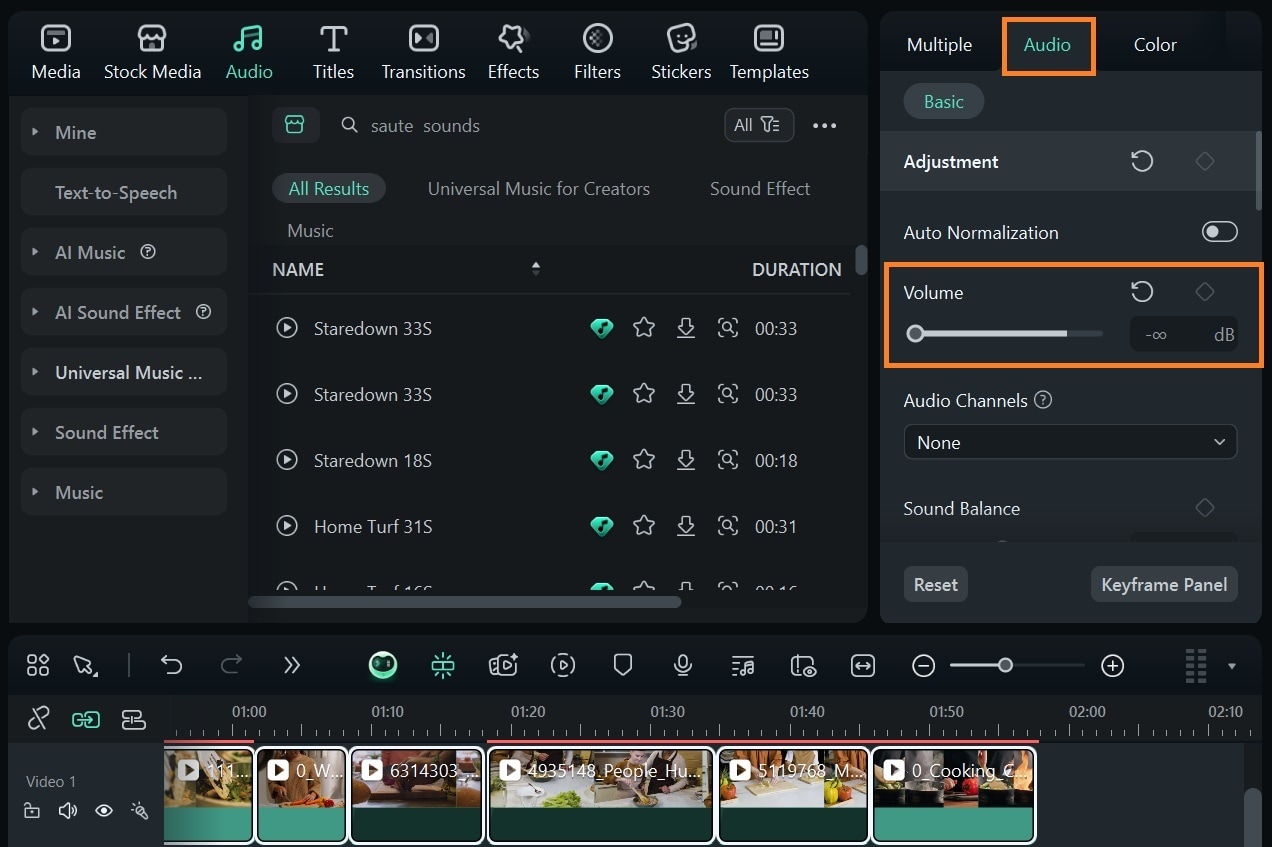
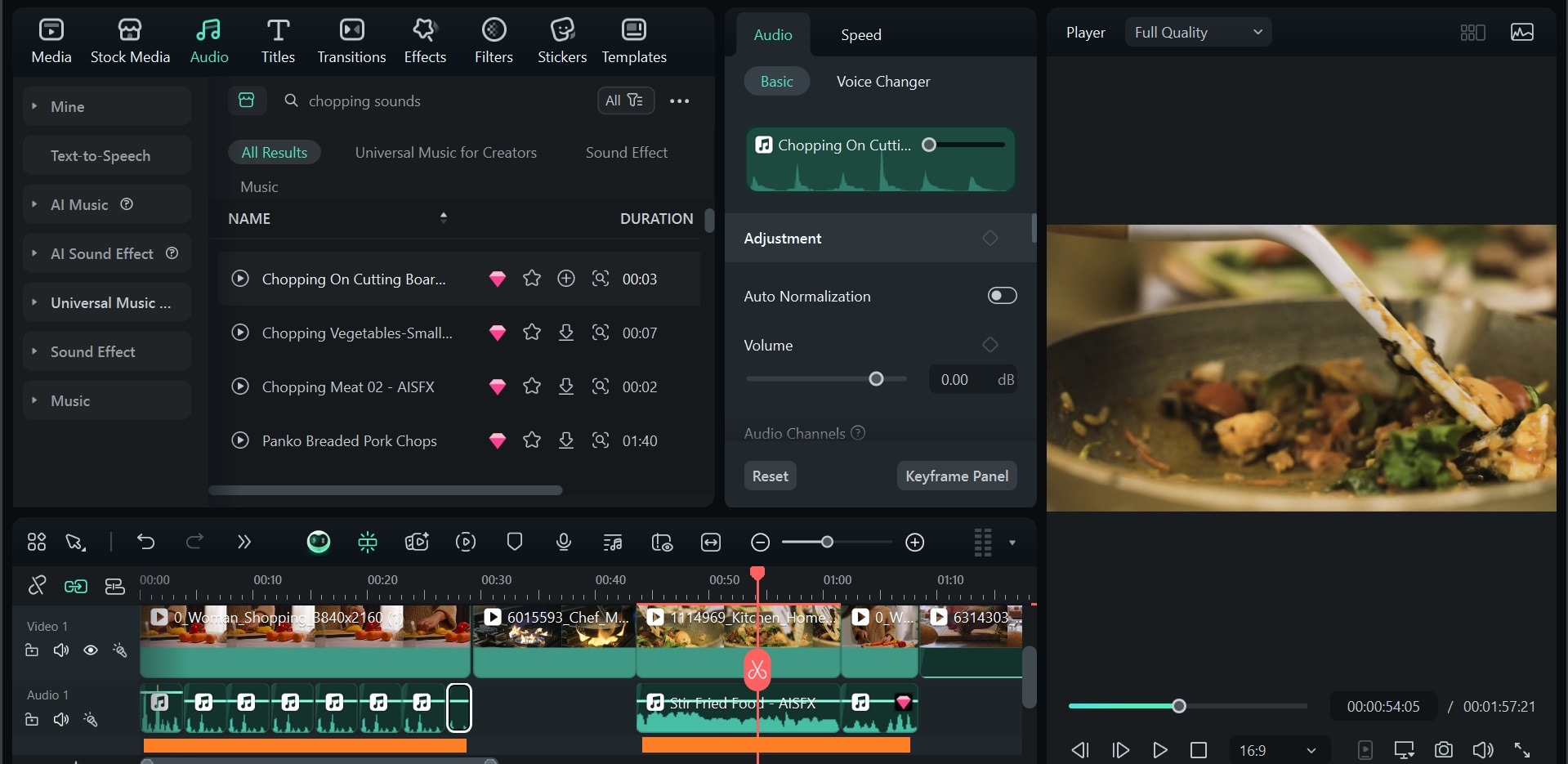
- Select the sound clip on the timeline.
- Go to the Audiotab on the editor panel and add Fade in or Fade out
- Adjust the slider to set the timing.
- Test the mix with headphones. It should feel smooth and not fake or unnatural.
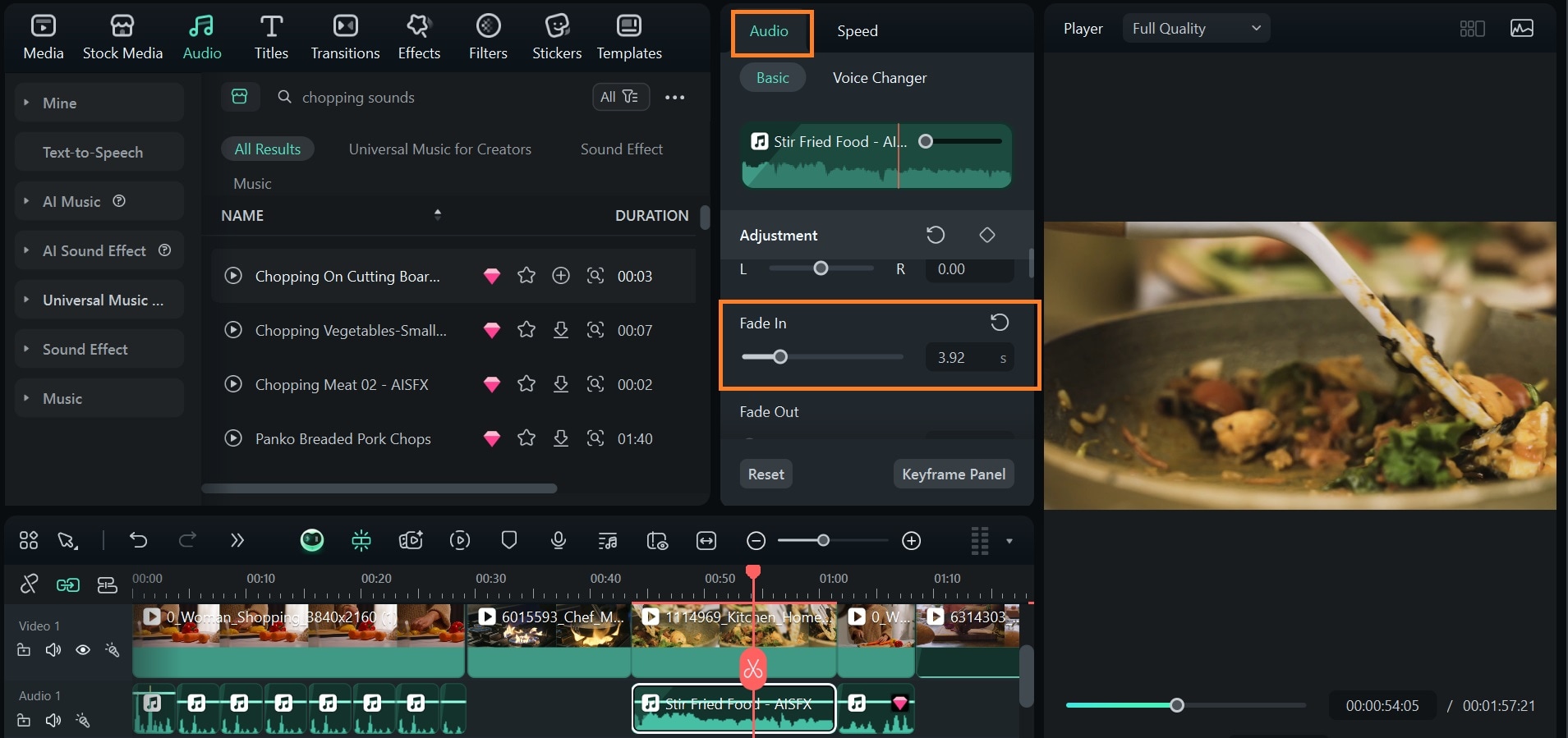
Part 4: Editing Tips for Best ASMR Cooking Videos
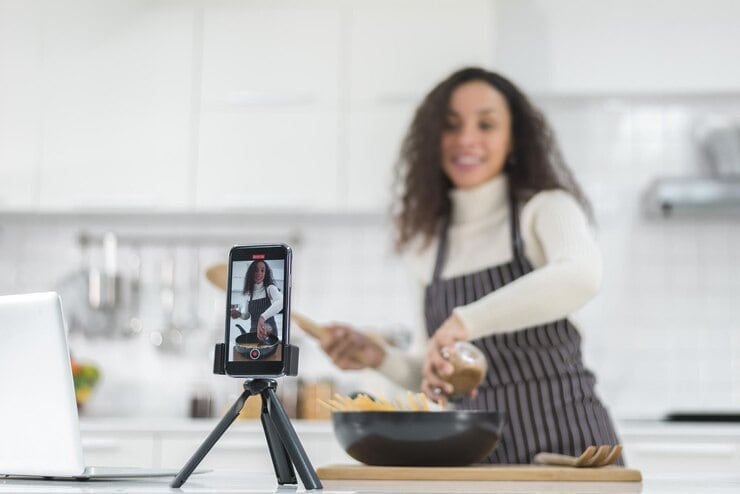
With ASMR cooking videos, the way you cut and pace your footage can either improve your video’s sensory experience or completely deaden it.
So start with how you shoot your video. If you film with ASMR in mind, editing will be so much easier.
- Minimal camera movementand soft lighting create a calm atmosphere.
- Film slower cooking sequences, like peeling, pouring, or simmering, that naturally invite focus.
- Avoid handheld jitter—keep shots steady and intentional.
A good rule of thumb: one shot = one action. Let the camera linger. If you’re slicing a tomato, stay on that one shot until it’s fully sliced. The longer the moment breathes, the more satisfying it becomes.
If you’re cracking an egg, let that play out from start to finish in one shot. If you’re pouring soup into a bowl, don’t cut mid-pour. Let it land and settle.
Sync Visuals with Sound for Maximum Effect
Cut your clips and line them up with key sound moments—like the exact sizzle of food hitting a pan or the sound of a spoon stirring. Use the waveform view in the timeline to identify sound peaks. Trim your clips so the action lands in perfect sync with the sound.
Bonus: How to Make ASMR Cooking Content That Goes Viral
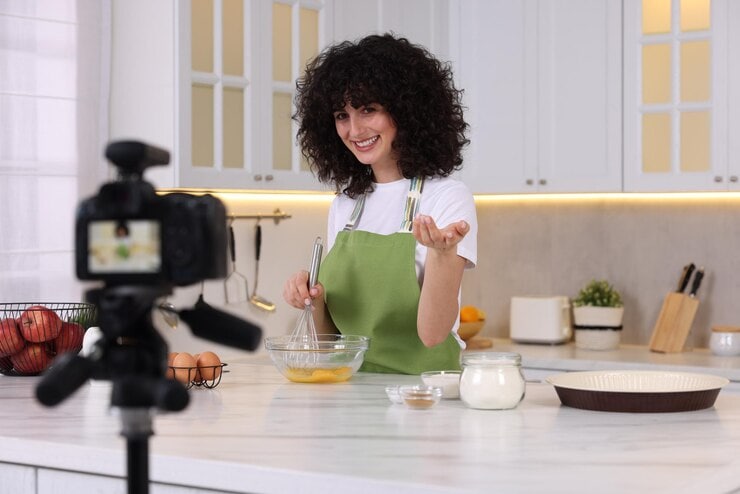
Great ASMR content is satisfying. But ASMR cooking videos that go viral are satisfying and impossible to scroll past.
You don’t need flashy effects or a million followers—you need to capture attention fast, keep it flowing, and make the experience worth replaying. With the right tools, even a simple cooking clip can blow up.
Hook Viewers in the First 3 Seconds
The first few seconds make or break your video. In ASMR, that hook often comes from:
- There should be a visual hook in the first frame, such as a glossy egg yolk, a quick action, or a clean close-up of ingredients.
- A clear audio hook in the form of a perfect crunch, sizzle, or pour that draws the ear in before the viewer even processes the visuals
Keep It Short, Smooth, and Satisfying
Short-form ASMR kitchen videos perform better on platforms like TikTok, Reels, and YouTube Shorts. But short doesn’t mean rushed.
Use slow pacing to let each sound land fully. Avoid abrupt cuts or jumps.
Filmora makes this super easy with the Smart Cut tool. This tool helps you extract the best clips from longer videos automatically. You can trim out dead space and keep only the most satisfying sounds and visuals, without rewatching hours of footage.
Conclusion
Creating cooking videos for ASMR isn’t just about filming food; it’s about making a food video that feels as good as it looks. And you don’t need a fancy studio to do it. With a quiet space, minimalist kitchen setup, good filming techniques, and a tool like Filmora, you have everything you need to create ASMR cooking clips that people want to replay, save, and share.
From its built-in ASMR sound effects to tools like Smart Cut and audio fading, Filmora takes your video from just a cooking video to a relaxing ASMR clip. So whether you're chasing your first viral hit or just want your next video to sound better than the last, this article gives you the means—and the tools—to make it happen.



 100% Security Verified | No Subscription Required | No Malware
100% Security Verified | No Subscription Required | No Malware


